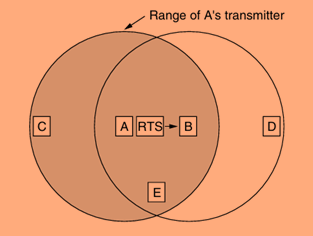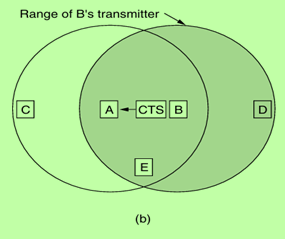Wireless LANs: Understanding the Dynamics of Wireless Communication
Wireless Local Area Networks (WLANs) have revolutionized the way devices communicate, allowing laptops, smartphones, and other devices to connect without the constraints of physical cables. This article delves into the unique characteristics of wireless LANs, the challenges they face, and the protocols designed to enhance their performance
What is a Wireless LAN?
A Wireless LAN (WLAN) is a network that enables devices to communicate with each other using radio waves. Unlike traditional wired LANs, which rely on physical connections, WLANs provide flexibility and mobility, making them ideal for environments like offices, schools, and public spaces. In a typical WLAN setup, access points (APs) are strategically placed to ensure comprehensive coverage, allowing devices within range to connect seamlessly.
Key Features of Wireless LANs
→ Broadcast Channel: WLANs operate as broadcast channels, meaning that data sent from one device can be received by all devices within range. However, this also leads to unique challenges, such as managing interference and ensuring efficient data transmission.
→ Cellular Configuration: In many office buildings, APs are connected via wired networks, creating a cellular-like structure. Each cell has a limited range, typically tens of meters, allowing multiple devices to share the same channel while maintaining high bandwidth, often reaching up to 600 Mbps.
Challenges in Wireless Communication
Wireless LANs face several challenges that differ from those encountered in wired networks:
1. Collision Detection Limitations
In wired networks, devices can detect collisions in real-time. However, in wireless environments, the ability to detect collisions is significantly reduced. The received signal at a station may be extremely weak, making it difficult to identify ongoing transmissions. Instead, WLANs rely on acknowledgments to determine if a transmission was successful or if a collision occurred.
2. Hidden Terminal Problem
One of the most significant issues in wireless communication is the hidden terminal problem. This occurs when a station (e.g., Station C) cannot detect another station (e.g., Station A) that is transmitting to a third station (e.g., Station B). As a result, Station C may attempt to transmit simultaneously, causing a collision at Station B. This problem highlights the need for effective Medium Access Control (MAC) protocols that can prevent such collisions.
3. Exposed Terminal Problem
Conversely, the exposed terminal problem arises when a station (e.g., Station C) hears a transmission from another station (e.g., Station B) and incorrectly assumes it cannot transmit to a different station (e.g., Station D). This leads to unnecessary delays and inefficient use of bandwidth.
MAC Protocols for Wireless LANs
To address the challenges of wireless communication, several MAC protocols have been developed. One of the most influential is the Multiple Access with Collision Avoidance (MACA) protocol.
MACA Protocol Overview
The MACA protocol is designed to minimize collisions by using a request-to-send (RTS) and clear-to-send (CTS) mechanism. Here’s how it works:
1.RTS Transmission: When Station A ants to send data to Station B, it first sends an RTS frame to B. This short frame includes information about the length of the upcoming data frame.
A sending an RTS to B
2.CTS Response: Upon receiving the RTS, Station B replies with a CTS frame, which also contains the data length. This response informs nearby stations of the impending transmission.
B responding with a CTS to A.
3.Data Transmission: After receiving the CTS, Station A can safely transmit its data, knowing that nearby stations have been informed to defer their transmissions.
Overhearing and Deferring
Stations that overhear the RTS or CTS frames can determine their proximity to the transmitting stations. For example:
→ Station C hears the RTS from A but not the CTS from B. It can transmit to its intended recipient while A is sending data.
→ Station D hears the CTS from B and knows to defer its transmission until the data frame is complete.
Despite these precautions, collisions can still occur if multiple stations attempt to send RTS frames simultaneously. In such cases, unsuccessful transmitters wait a random amount of time before retrying, reducing the likelihood of repeated collisions.
Conclusion
Wireless LANs offer unparalleled flexibility and convenience, enabling devices to connect and communicate without physical constraints. However, they also present unique challenges, such as collision detection limitations and the hidden and exposed terminal problems. By implementing effective MAC protocols like MACA, wireless networks can enhance their performance, ensuring efficient and reliable communication. As technology continues to evolve, understanding these dynamics will be crucial for optimizing wireless communication in various applications, from office environments to public spaces
